Posted by · 1 Comment
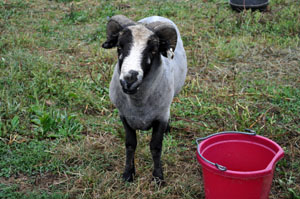 Baw Blue, our devilishly handsome Navajo-Churro ram will return to his home farm in a few days. We heeded his owner’s warning and gave him full and free access to the girls. (Translation: we did not venture into the pasture while he was here except for feeding and watering. Blue’s known to be quite territorial when it comes to his “girlfriends.”)
Baw Blue, our devilishly handsome Navajo-Churro ram will return to his home farm in a few days. We heeded his owner’s warning and gave him full and free access to the girls. (Translation: we did not venture into the pasture while he was here except for feeding and watering. Blue’s known to be quite territorial when it comes to his “girlfriends.”)
I’ve missed my ewes! Reese will hear my voice from across the yard and call out – at least, I’m thinking she’s calling out to me. She’s probably just making her random matriarchal “baaa-aa.” Yesterday morning, however, I left the pasture after changing out the water buckets and when I was back at the spigot, I heard her trademark “baaa.” I was shocked to see her standing at the open gate that I had forgotten to latch! Everyone else was too busy chomping at the hay I’d left in the rack to notice the gateway but there she was just standing and alerting me of something “different.”
So, Blue will make his return journey this weekend having spread his maleness (we hope) amongst 11 ewes and we’ll go back to coddling our sheep. It was nice having him around these last few weeks. He added a certain “something” to the landscape.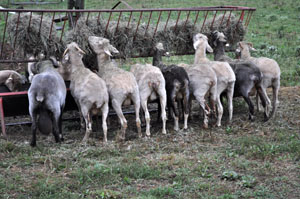

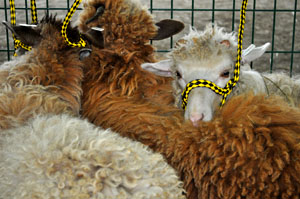 Rebecca Gunther, of
Rebecca Gunther, of 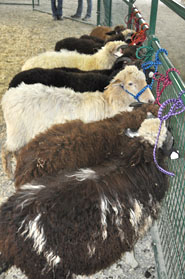
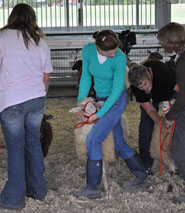
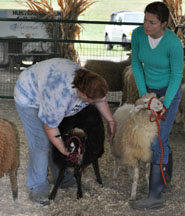 I was bound and determined NOT to let Oneida show ME up in the ring (after all, Ingrid was there!) so I kept her at my side with no slack in the lead and a hand firmly on the back of her neck and another cupping her jaw. Imagine my dismay, after Ingrid’s first few passes, when she asked me to move to one end of the line with Oneida. I had watched a few judgings before this and knew that the end where she was moving me was not where the winners had been repositioned. I probably had “rookie” stamped on my forehead! As beautiful and deserving as Oneida was, I was convinced I had done something as a handler to disqualify us. I was pretty sad.
I was bound and determined NOT to let Oneida show ME up in the ring (after all, Ingrid was there!) so I kept her at my side with no slack in the lead and a hand firmly on the back of her neck and another cupping her jaw. Imagine my dismay, after Ingrid’s first few passes, when she asked me to move to one end of the line with Oneida. I had watched a few judgings before this and knew that the end where she was moving me was not where the winners had been repositioned. I probably had “rookie” stamped on my forehead! As beautiful and deserving as Oneida was, I was convinced I had done something as a handler to disqualify us. I was pretty sad.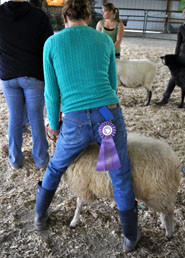
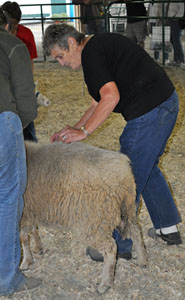 Not only was this rookie wrong about the line-up, Oneida captured a blue-ribbon for her class and we went on to grab the Grand Reserve ribbon!! I couldn’t believe it! Well, it wasn’t “we” after all. Oneida is a one-of-a-kind Navajo-Churro and Ingrid validated that. However, I’d like to think my grip on that little girl that day ushered our chances right along in the ring.
Not only was this rookie wrong about the line-up, Oneida captured a blue-ribbon for her class and we went on to grab the Grand Reserve ribbon!! I couldn’t believe it! Well, it wasn’t “we” after all. Oneida is a one-of-a-kind Navajo-Churro and Ingrid validated that. However, I’d like to think my grip on that little girl that day ushered our chances right along in the ring.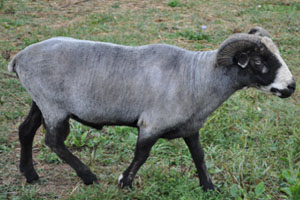
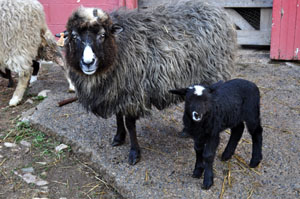
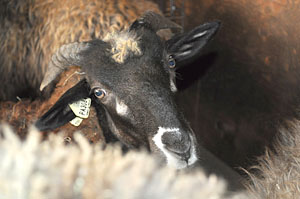
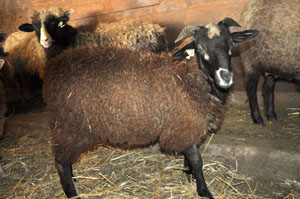
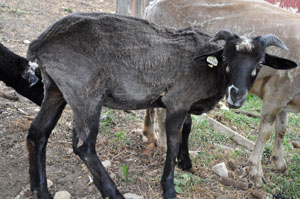
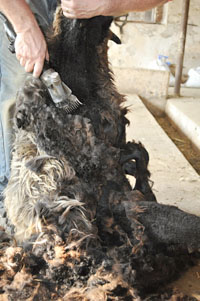 Navajo-Churro sheep need to be shorn twice a year. Their wool grows an inch a month.
Navajo-Churro sheep need to be shorn twice a year. Their wool grows an inch a month.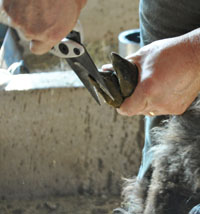 He’ll trim the hooves, de-worm (if we wish) – which just means he administers a “drench,” that is a liquid – and shear.
He’ll trim the hooves, de-worm (if we wish) – which just means he administers a “drench,” that is a liquid – and shear.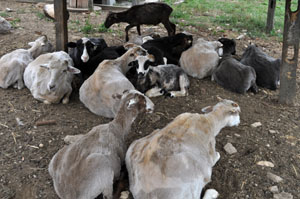 Sheep almost look like different animals after a shearing. It just has to feel good to have that “haircut” every six months or so – just look at how relaxed they all looked that next morning.
Sheep almost look like different animals after a shearing. It just has to feel good to have that “haircut” every six months or so – just look at how relaxed they all looked that next morning. “Ottawa”, the stunning white ram-lamb went home with Shelly to New York and handsome little “Newman” made the trek back to Linda’s Shepherd’s Loft in Pennsylvania.
“Ottawa”, the stunning white ram-lamb went home with Shelly to New York and handsome little “Newman” made the trek back to Linda’s Shepherd’s Loft in Pennsylvania.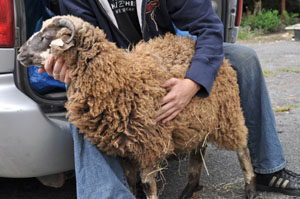
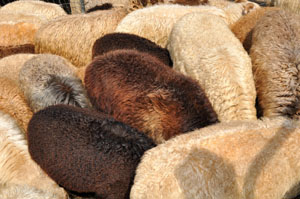 The Navajo-Churro wool is beautiful! Just look at the colors of the sheep I was able to photograph before everyone came charging into the barn last week. I’ve been fascinated by their coats since we first purchased Reese and her twins, Lovey and Clara (Clara Barton Angel Of The Battlefield, so named by my history-loving son) years ago.
The Navajo-Churro wool is beautiful! Just look at the colors of the sheep I was able to photograph before everyone came charging into the barn last week. I’ve been fascinated by their coats since we first purchased Reese and her twins, Lovey and Clara (Clara Barton Angel Of The Battlefield, so named by my history-loving son) years ago.
